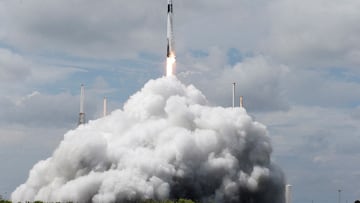What is NASA’s Europa Clipper Mission? When will it launch?
NASA is sending its largest probe ever to investigate Jupiter’s fourth largest moon, which is covered in water and ice, for signs of life.

On Earth, everywhere water is found, so too is life. With that in mind, NASA is sending its first dedicated mission to Jupiter’s fourth largest moon, Europa, as it is covered by a global ocean which is encased in ice.
Europa, which is about the same size as our moon, is considered the most likely place in the solar system beyond Earth that could harbor life right now.
What is NASA’s Europa Clipper Mission?
The Europa Clipper is the largest interplanetary spacecraft that NASA has ever built. Once the spacecraft is unfurled it will be about the size of a basketball court spanning over 100 feet. The main body is roughly the size of a campervan and contains nine scientific instruments according to the space agency.
It will take about five and a half years to get to the gas giant Jupiter and is expected to arrive in April 2030. It will cross paths with Europa 49 times, coming within 16 miles of the moon’s surface. Each flyby will take the orbital space probe over a different location giving it the ability to scan almost the entire surface of the moon.
A journey of 1.8 billion miles is about to begin.
— NASA Europa Clipper (@EuropaClipper) October 13, 2024
All about NASA's #EuropaClipper mission to explore Jupiter's intriguing moon Europa: https://t.co/KX1yfEbiNu
Launch is slated for Monday, Oct. 14. Here's how to watch: https://t.co/x4XNEuvd7U pic.twitter.com/qkUkVq39pT
The Europa Clipper Mission has three main science objectives says NASA. Scientists want to understand the nature of the ice shell and the ocean beneath it, which is believed to be 80 miles or more deep, as well as the moon’s composition and geology. “The mission’s detailed exploration of Europa will help scientists better understand the astrobiological potential for habitable worlds beyond our planet,” says NASA.
Related stories
At the end of its mission in 2034, the Europa Clipper will crash into Jupiter’s largest moon, Ganymede.
When will it launch?
After being delayed by Hurricane Milton, NASA rescheduled the launch for Monday, October 14. Sometime after 12:06 pm the spacecraft will liftoff from Launch Complex 39A at NASA’s Kennedy Space Center in Florida on top of a SpaceX Falcon Heavy rocket. The launch will be broadcast live.



Complete your personal details to comment